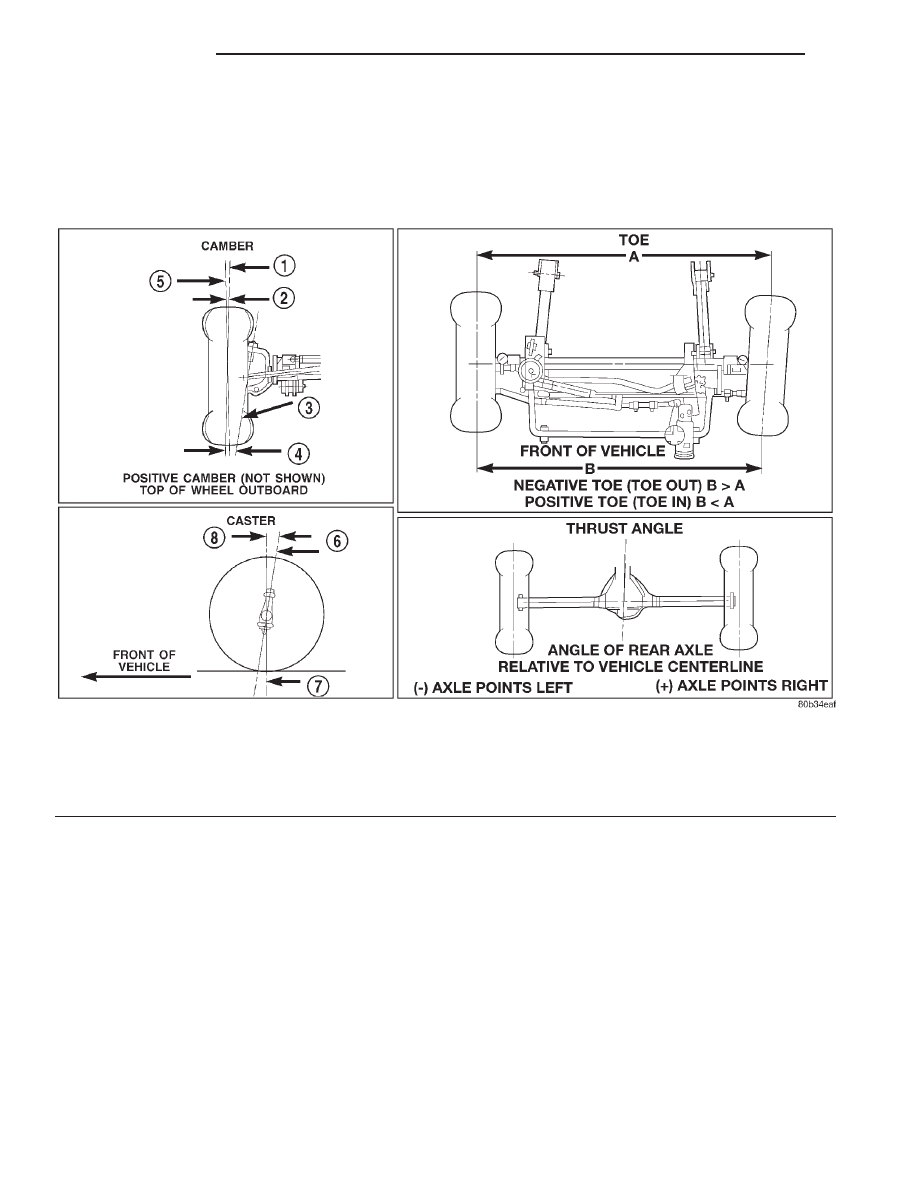Jeep XJ. Manual - part 8

• THRUST ANGLE is the angle of the rear axle
relative to the centerline of the vehicle. Incorrect
thrust angle can cause off-center steering and exces-
sive tire wear. This angle is not adjustable, damaged
component(s) must be replaced to correct the thrust
angle.
Fig. 1 Wheel Alignment Measurements
1 – WHEEL CENTERLINE
2 – NEGATIVE CAMBER ANGLE
3 – PIVOT CENTERLINE
4 – SCRUB RADIUS
5 – TRUE VERTICAL
6 – KING PIN
7 – VERTICAL
8 – POSITIVE CASTER
2 - 2
SUSPENSION
XJ
DESCRIPTION AND OPERATION (Continued)